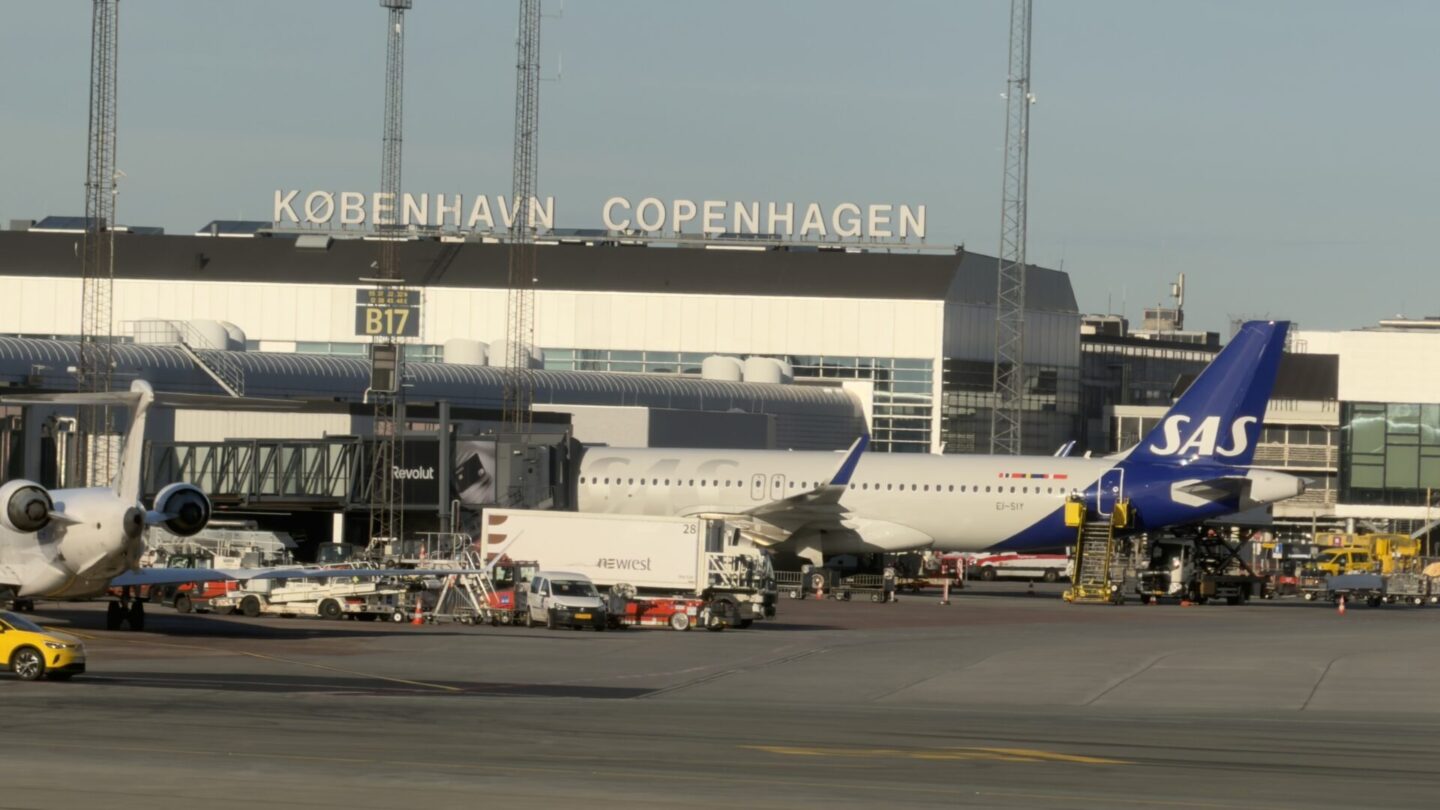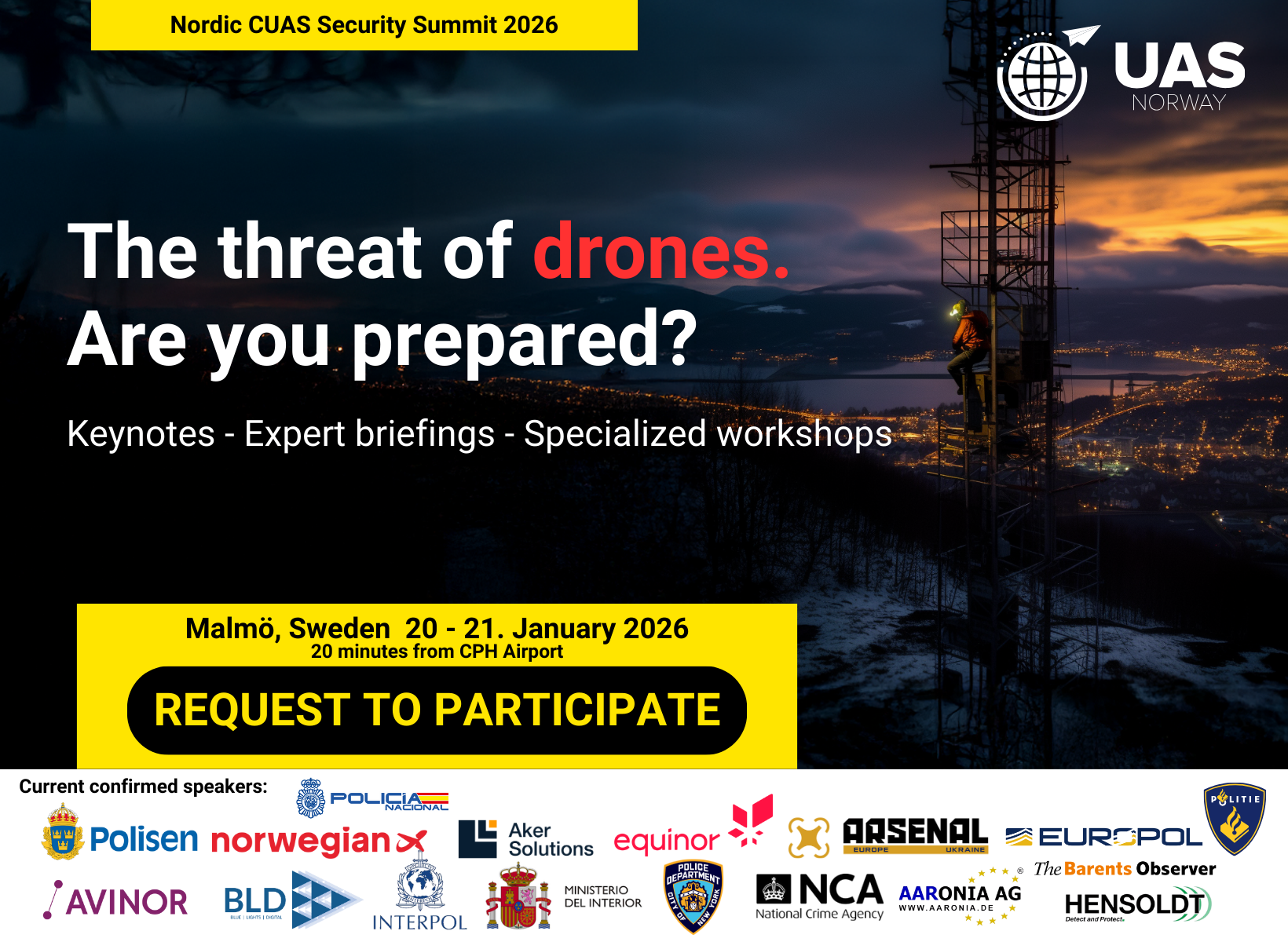From Sea to Sky: Hybrid Threats Across the Nordic Domain
Possible drone observations and unexplained activity across the Nordic region have raised important questions about situational awareness, preparedness and coordinated airspace understanding. CUAS Security Summit 2026 brings these concerns into focus at a time when the lower airspace is becoming more active and more uncertain.A Region Facing New Airspace Uncertainty
Across the Nordics, operators and authorities are reporting unexplained movements, unusual sensor readings and possible drone observations near airports, offshore installations, maritime corridors and critical infrastructure. These incidents often remain unresolved and may have multiple explanations, but they reveal a shared reality: the lower airspace is no longer predictable, and the region must understand this environment better than it does today.
Possible Drones, Definite Knowledge Gaps
Not every unexplained observation is a drone, yet the uncertainty itself is a challenge. Unknown objects and unclear intent can create hesitation at the wrong moment or prompt unnecessary responses. The CUAS Security Summit 2026 addresses these gaps by offering insight into how authorities, infrastructure operators and analysts can classify unknown objects, read sensor clues more accurately and build a clearer picture of what is truly happening in the sky.
Why the Nordics Need a Shared Airspace Picture
The Nordic region depends on a stable and trustworthy airspace for aviation, offshore operations, undersea infrastructure, energy production and national security. With reports of GNSS disturbances, hybrid activity at sea and irregular patterns around critical assets, individual nations can no longer rely solely on isolated local knowledge. A coordinated airspace picture is needed if the region is to detect anomalies early and respond in a deliberate and proportionate way.
A Summit Designed Around Emerging Nordic Challenges
The preliminary program for CUAS Security Summit 2026 reflects the real issues the region is facing. Instead of assuming every observation is a drone or every incident represents a threat, the summit explores the complexity behind the unknown: how detection networks should function, how multiple sensors can be fused, how GNSS disruption affects situational awareness, and how agencies can navigate incidents even when information is incomplete.
The panels and keynotes examine hybrid activity, maritime and subsea vulnerabilities, technological advances, legal considerations and the broader air and maritime domain that increasingly shapes Nordic security.
Strengthening Readiness Through Shared Understanding
By gathering experts from defence, law enforcement, aviation, maritime operations, academia and industry, the summit offers an uncommon opportunity for joint analysis and knowledge-building. This cross-sector approach makes it possible to bridge the gap between technical capability and operational need, and to create a shared foundation for resilience in the lower airspace.
Conclusion
Unexplained airspace activity will likely become more frequent as technology evolves and geopolitical tension increases. The CUAS Security Summit 2026 provides the knowledge, context and collaboration needed to interpret these events with clarity rather than speculation. For Nordic agencies, operators and decision-makers who depend on stable and predictable airspace, this summit represents an essential step toward understanding what is really moving above us.


